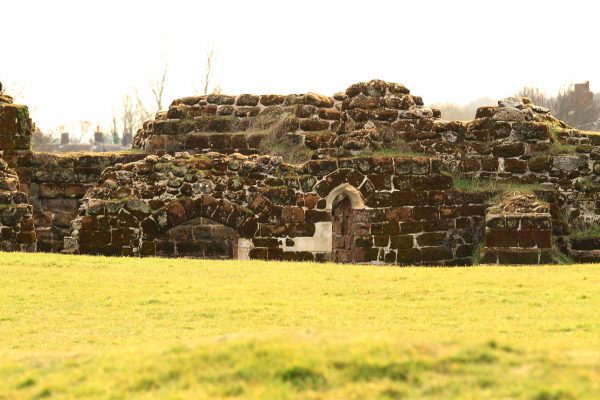One Day in Bolingbroke Castle by Jim Snee
It is over twenty years since I first visited Bolingbroke Castle, and yet the experience remains very vivid.

It had taken me a little while to find it. I had read about it and knew its history, but I didn’t actually know what it looked like. I did not have access to the internet in those days, there was no google map I could call up to show me the site in advance.
There are days when the skies are cloudy, the wind is light and there is a coldness to the light that is unique to Lincolnshire. On such a day I drove through Horncastle, turned off towards Winceby and then headed down the narrow country lane that leads to Old Bolingbroke. Having reached the centre of the village, I parked my car and, armed with an OS map, set off to find a castle.
It was always a joke, when I was at university, that whenever they took archaeology students to look at an ancient monument, the first thing the students would do is walk straight past it without recognising it. It can also happen to professionals, as I walked first down, and then up moat lane without realising I was just the other side of the hedge from my objective. At last I looked up from the map and over the gate and spotted what Eddie Izzard would describe as “a series of small walls.”
Now firmly back on track, I entered the field in which the castle lay, walked through a gap in the low remains of the keep and into the courtyard. I stood in the centre and turned a full circle, taking in everything; the low ruins, the hawthorns, the church tower glimpsed through the trees, and the earthworks of the route yard. I was smitten.
I had visited many castles before, some bigger, some older, some far more remote, but there was something special about this hidden gem of Bolingbroke.
The first castle had been built to control the point that the road from Boston, which followed the low ridge of the Stickney moraine, began its climb into the Wolds. Later it had been a statement piece, a show of wealth and strength in uncertain times. Those uncertain times brought Henry IV to the throne. Later it had been garrisoned, besieged, and garrisoned again during the Civil War.
As I stood in that courtyard I ran through the history in my mind. As I came to each episode, I looked to the landmarks, the refurbished tower, the narrow gateway from which defiant words were hurled, and the church tower which had traded shots with the castle garrison. And then I sat on the grass and drank in the fresh air and the atmosphere.
It is at moments like that, that I can quite understand why Lincolnshire has inspired artists and writers. Perhaps in the hustle and bustle of the modern world we fail to take in the romantic scenes that under our noses. Instead we look to others to fulfil our longings for a romantic past. Tolkien, for example, was well acquainted with the Lincolnshire landscape, and it left its mark upon him. What blend of history and mythology he would have conjured up for Bolingbroke Castle I do not know. But even now I like to speculate.
It is from that speculation and my love of Bolingbroke Castle that I began to draw my plans for a new kind of event for Heritage Open Days. Teaming up with Charlotte Davey and dragooning a few other members of Heritage Lincolnshire in as supporting actors, we set about creating an adventure game for Bolingbroke Castle. Based on the television series Knightmare (a fond memory of my youth) and blending together the many and varied folk stories of Lincolnshire we have endeavoured to create suspense, jeopardy, mystery and, above else, entertainment. It is our hope that, for one Heritage Open Day at least, we will make Bolingbroke Castle the romantic ruin it truly deserves to be.
As I write this, however, I am aware that the ordeal of Covid-19 is still upon us and that Heritage Open Days may be cancelled or curtailed by life saving measures. Be that as it may, our plans are made. If not this year, then another year we will run our event. We may be delayed, but not defeated.
